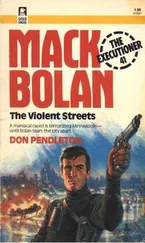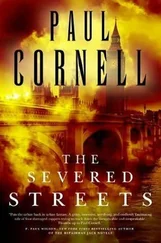For that reason, the professionals say nothing. No alibis. No explanations. No expressions of polite dismay or blanket denials. In the late 1970s, when men by the names of Dennis Wise and Vernon Collins were matching each other body for body as Baltimore’s premier contract killers and no witness could be found to testify against either, things got to the point where both the detectives and their suspects knew the drill:
Enter room.
Miranda.
Anything to say this time, Dennis?
No, sir. Just want to call my lawyer.
Fine, Dennis.
Exit room.
For anyone with experience in the criminal justice machine, the point is driven home by every lawyer worth his fee. Repetition and familiarity with the process soon place the professionals beyond the reach of a police interrogation. Yet more than two decades after the landmark Escobedo and Miranda decisions, the rest of the world remains strangely willing to place itself at risk. As a result, the same law enforcement community that once regarded the 1966 Miranda decision as a death blow to criminal investigation has now come to see the explanation of rights as a routine part of the process-simply a piece of station house furniture, if not a civilizing influence on police work itself.
In an era when beatings and physical intimidation were common tools of an interrogation, the Escobedo and Miranda decisions were sent down by the nation’s highest court to ensure that criminal confessions and statements were purely voluntary. The resulting Miranda warning was “a protective device to dispel the compelling atmosphere of the interrogation,” as Chief Justice Earl Warren wrote in the majority opinion. Investigators would be required to assure citizens of their rights to silence and counsel, not only at the moment of arrest, but at the moment that they could reasonably be considered suspects under interrogation.
In answer to Miranda, the nation’s police officials responded with a veritable jeremiad, wailing in unison that the required warnings would virtually assure that confessions would be impossible to obtain and conviction rates would plummet. Yet the prediction was soon proved false for the simple reason that those law enforcement leaders-and, for that matter, the Supreme Court itself-underestimated a police detective’s ingenuity.
Miranda is, on paper, a noble gesture which declares that constitutional rights extend not only to the public forum of the courts, but to the private confines of the police station as well. Miranda and its accompanying decisions established a uniform concept of a criminal defendant’s rights and effectively ended the use of violence and the most blatant kind of physical intimidation in interrogations. That, of course, was a blessing. But if the further intent of the Miranda decision was, in fact, an attempt to “dispel the compelling atmosphere” of an interrogation, then it failed miserably.
And thank God. Because by any standards of human discourse, a criminal confession can never truly be called voluntary. With rare exception, a confession is compelled, provoked and manipulated from a suspect by a detective who has been trained in a genuinely deceitful art. That is the essence of interrogation, and those who believe that a straightforward conversation between a cop and a criminal-devoid of any treachery-is going to solve a crime are somewhere beyond naive. If the interrogation process is, from a moral standpoint, contemptible, it is nonetheless essential. Deprived of the ability to question and confront suspects and witnesses, a detective is left with physical evidence and in many cases, precious little of that. Without a chance for a detective to manipulate a suspect’s mind, a lot of bad people would simply go free.
Yet every defense attorney knows that there can be no good reason for a guilty man to say anything whatsoever to a police officer, and any suspect who calls an attorney will be told as much, bringing the interrogation to an end. A court opinion that therefore requires a detective-the same detective working hard to dupe a suspect-to stop abruptly and guarantee the man his right to end the process can only be called an act of institutional schizophrenia. The Miranda warning is a little like a referee introducing a barroom brawl: The stern warnings to hit above the waist and take no cheap shots have nothing to do with the mayhem that follows.
Yet how could it be otherwise? It would be easy enough for our judiciary to ensure that no criminal suspect relinquished his rights inside a police station: The court could simply require the presence of a lawyer at all times. But such a blanket guarantee of individual rights would effectively end the use of interrogation as an investigative weapon, leaving many more crimes unsolved and many more guilty men and women unpunished. Instead, the ideals have been carefully compromised at little cost other than to the integrity of the police investigator.
After all, it’s the lawyers, the Great Compromisers of our age, who have struck this bargain, who still manage to keep cuffs clean in the public courts, where rights and process are worshiped faithfully. It is left for the detective to fire this warning shot across a suspect’s bow, granting rights to a man who will then be tricked into relinquishing them. In that sense, Miranda is a symbol and little more, a salve for a collective conscience that cannot reconcile libertarian ideals with what must necessarily occur in a police interrogation room. Our judges, our courts, our society as a whole, demand in the same breath that rights be maintained even as crimes are punished. And all of us are bent and determined to preserve the illusion that both can be achieved in the same small room. It’s mournful to think that this hypocrisy is the necessary creation of our best legal minds, who seem to view the interrogation process as the rest of us look upon breakfast sausage: We want it on a plate with eggs and toast; we don’t want to know too much about how it comes to be.
Trapped in that contradiction, a detective does his job in the only possible way. He follows the requirements of the law to the letter-or close enough so as not to jeopardize his case. Just as carefully, he ignores that law’s spirit and intent. He becomes a salesman, a huckster as thieving and silver-tongued as any man who ever moved used cars or aluminum siding-more so, in fact, when you consider that he’s selling long prison terms to customers who have no genuine need for the product.
The fraud that claims it is somehow in a suspect’s interest to talk with police will forever be the catalyst in any criminal interrogation. It is a fiction propped up against the greater weight of logic itself, sustained for hours on end through nothing more or less than a detective’s ability to control the interrogation room.
A good interrogator controls the physical environment, from the moment a suspect or reluctant witness is dumped in the small cubicle, left alone to stew in soundproof isolation. The law says that a man can’t be held against his will unless he’s to be charged with a crime, yet the men and women tossed into the interrogation room rarely ponder their legal status. They light cigarettes and wait, staring abstractedly at four yellow cinderblock walls, a dirty tin ashtray on a plain table, a small mirrored window and a series of stained acoustic tiles on the ceiling. Those few with heart enough to ask whether they are under arrest are often answered with a question:
“Why? Do you want to be?”
“No.”
“Then sit the fuck down.”
Control is the reason a suspect is seated farthest from the interrogation room door, and the reason the room’s light switch can only be operated with a key that remains in possession of the detectives. Every time a suspect has to ask for or be offered a cigarette, water, coffee or a trip to the bathroom, he’s being reminded that he’s lost control.
Читать дальше












